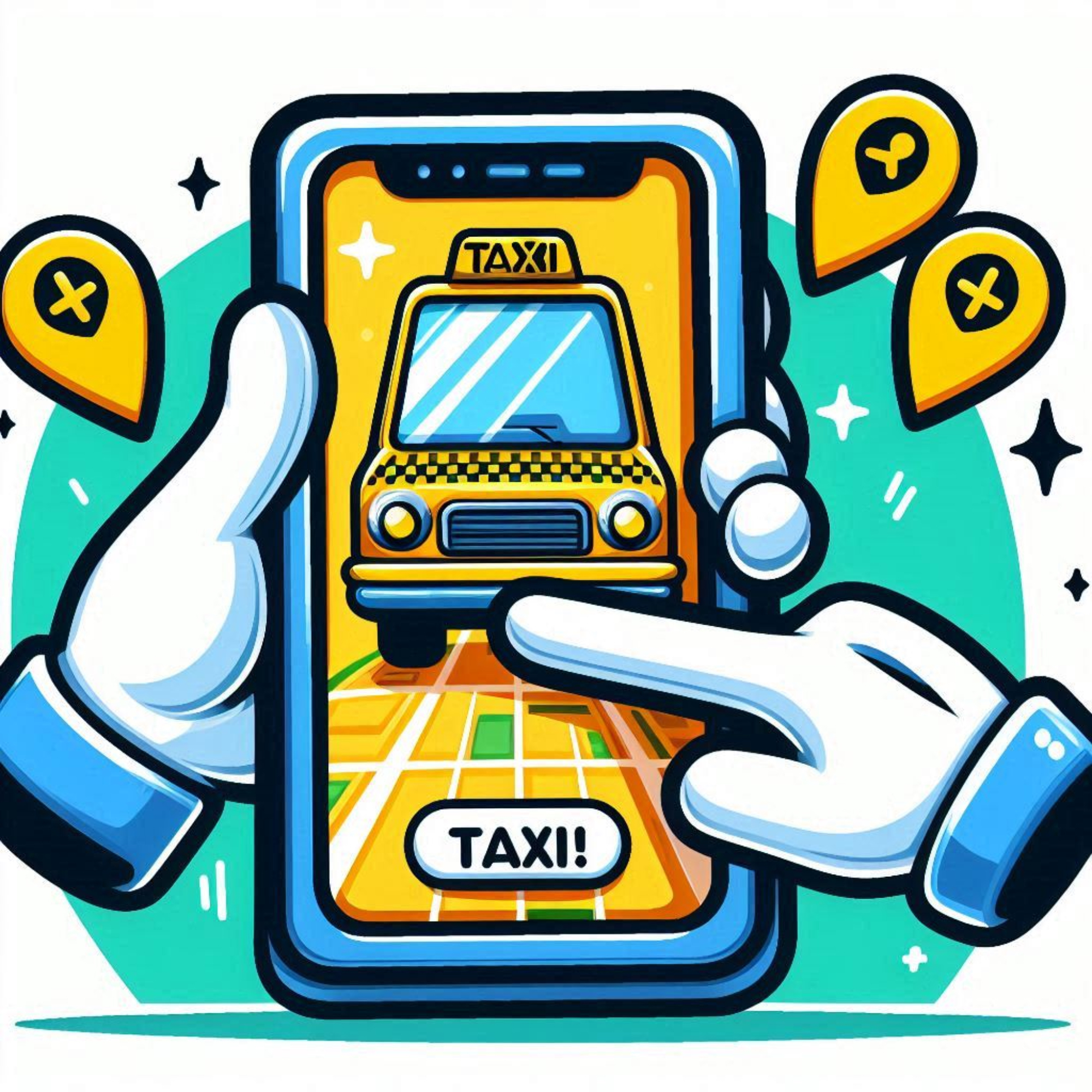The Rise of Grab: How He Built a $2 Billion a Year Super App
From humble beginnings to a $2 billion annual revenue juggernaut, the journey of Grab’s super app is nothing short of extraordinary.
This Southeast Asian tech unicorn transformed from a simple taxi-hailing service into a multi-faceted digital ecosystem, revolutionizing daily life for millions.
At the heart of this remarkable story is a visionary entrepreneur who dared to challenge the status quo and build a super app empire.
His creation now serves as the backbone of urban life in eight major Southeast Asian countries, touching the lives of over 35 million users.
More than just a convenience, Grab has become a powerful force for economic change, providing income opportunities for over 13 million drivers and merchants.
This is the tale of relentless innovation, strategic expansion, and unwavering commitment to improving lives through technology.
From ride-hailing to food delivery, digital payments to on-demand services, Grab’s super app has redefined what’s possible in the digital age.
Let’s delve into the inspiring story of how a $25,000 seed investment blossomed into a Nasdaq-listed super app powerhouse.
We strongly recommend that you check out our guide on how to take advantage of AI in today’s passive income economy.
Table of Contents
Early Beginnings
A Vision Born from Necessity
The spark that ignited the Grab super app revolution came from a simple yet profound realization.
The inefficiencies and dangers plaguing the Malaysian taxi system were more than just inconveniences; they were opportunities for change.
This insight led to the creation of a cloud-based dispatch system, aimed at solving safety issues for women and children.
Little did anyone know that this initial concept would evolve into a comprehensive super app ecosystem.
The founders’ commitment to creating positive societal, environmental, and economic impact laid the groundwork for Grab’s future success.
Their vision extended beyond profit, focusing on how technology could uplift communities across Southeast Asia.
This unique approach would prove instrumental in Grab’s journey from a local startup to a regional super app giant.
Challenges and Early Struggles
The road to building a super app empire was far from smooth, with numerous obstacles testing the founders’ resolve.
Initial skepticism from family members and potential investors made securing funding a Herculean task.
The founders’ unwavering belief in their vision pushed them to invest their personal savings into the fledgling company.
Operating out of a cramped driver’s room with poor ventilation and no WiFi, the team’s dedication never wavered.
Their resourcefulness shone through as they tethered internet connections from their mobile phones to keep operations running.
These early hardships forged a resilient company culture that would prove crucial in the face of future challenges.
The founders’ hands-on approach, including personally pitching to taxi drivers at gas stations in the early hours, set Grab apart.
This grassroots strategy laid the foundation for the loyal user base that would propel Grab’s super app to success.
The Evolution of Grab
From MyTeksi to Grab: A Super App is Born
The transformation from MyTeksi to Grab marked a pivotal moment in the company’s journey towards becoming a super app.
This rebranding signaled a shift from a local focus to a regional ambition, setting the stage for explosive growth.
The name “Grab” encapsulated the company’s expanding vision of providing on-demand services at users’ fingertips.
This strategic move positioned the company to tackle diverse markets across Southeast Asia with a unified brand identity.
As Grab expanded its services, the foundations of its super app strategy began to take shape.
The company’s agility in adapting to local needs while maintaining a cohesive user experience became a key differentiator.
By integrating multiple services into a single platform, Grab was laying the groundwork for its super app ecosystem.
This approach would prove instrumental in cementing Grab’s position as a leader in the Southeast Asian digital economy.
Expanding the Super App Ecosystem
Grab’s evolution into a super app was driven by a deep understanding of user needs and market opportunities.
The company’s expansion beyond ride-hailing was a natural progression, addressing pain points in users’ daily lives.
GrabPay emerged as a solution to digitize drivers’ earnings, enhancing safety and financial inclusion.
This move into digital payments opened up new avenues for growth, positioning Grab as a fintech innovator.
The introduction of GrabFood tapped into the burgeoning food delivery market, diversifying revenue streams.
By leveraging its existing driver network, Grab efficiently scaled its food delivery operations across the region.
GrabMart’s launch during the pandemic further expanded the super app’s utility, meeting essential needs during lockdowns.
Each new service added to the Grab super app strengthened its ecosystem, increasing user engagement and loyalty.
Overcoming Challenges
Battling Giants: The Uber Showdown
Grab’s rise to super app dominance wasn’t without fierce competition, particularly from global ride-hailing giant Uber.
The battle for Southeast Asian market share pushed both companies to innovate and improve their offerings rapidly.
Grab’s deep understanding of local markets and relentless focus on user experience proved to be crucial advantages.
The company’s super app strategy, integrating multiple services, set it apart from Uber’s primarily ride-hailing focus.
In a dramatic turn of events, Uber agreed to sell its Southeast Asian operations to Grab in 2018.
This deal, which gave Uber a 27.5% stake in Grab, was a watershed moment for the Southeast Asian tech scene.
It validated Grab’s super app model and cemented its position as the dominant player in the region.
The acquisition allowed Grab to consolidate its resources and accelerate its super app expansion plans.
Navigating Regulatory Hurdles
As Grab’s super app influence grew, so did scrutiny from regulators across Southeast Asia.
The company faced challenges in adapting its operations to comply with varying regulatory frameworks in different countries.
Grab’s approach to these challenges involved proactive engagement with government bodies and policymakers.
By positioning itself as a partner in digital economic development, Grab often found ways to work within regulatory constraints.
The company’s commitment to creating jobs and supporting local economies helped in building goodwill with authorities.
Grab’s super app model sometimes pushed the boundaries of existing regulations, necessitating innovative approaches.
The company’s efforts in educating stakeholders about the benefits of its super app ecosystem often paid dividends.
These experiences in navigating complex regulatory landscapes have become a valuable asset as Grab continues to expand.
The Super App Impact
Economic Empowerment Through Technology
Grab’s super app has become a powerful engine for economic empowerment across Southeast Asia.
By providing flexible income opportunities, Grab has helped millions of individuals supplement or create their primary income.
The super app’s diverse service offerings have created new markets and job categories in the digital economy.
Grab’s financial services, including microloans and insurance products, have enhanced financial inclusion in the region.
The company’s investments in training and upskilling programs have helped drivers and merchants adapt to the digital economy.
Grab’s super app ecosystem has also fostered the growth of small businesses by connecting them with a larger customer base.
The ripple effects of Grab’s economic impact extend beyond its immediate partners to the broader communities it serves.
As the super app continues to evolve, its potential for driving economic growth and innovation in Southeast Asia remains significant.
Revolutionizing Urban Mobility and Lifestyle
Grab’s super app has fundamentally transformed how people in Southeast Asian cities move, eat, and pay.
The convenience of having multiple services integrated into one app has simplified daily tasks for millions of users.
Grab’s ride-hailing service has improved urban mobility, reducing reliance on personal vehicles and easing traffic congestion.
The food delivery component of the super app has expanded culinary choices and supported local restaurants.
GrabPay’s widespread adoption has accelerated the transition towards cashless transactions in traditionally cash-heavy economies.
The super app’s data-driven approach has enabled more efficient resource allocation in urban areas.
Grab’s commitment to sustainability, including initiatives to reduce carbon emissions, aligns with growing environmental concerns.
As the super app continues to evolve, it’s poised to play an even larger role in shaping the future of urban living in Southeast Asia.
The Future of Grab
Embracing Artificial Intelligence
Grab’s latest frontier in super app innovation lies in the realm of artificial intelligence (AI).
The company is set to launch a new voice assistant feature in 2024, designed with accessibility in mind.
This AI-powered tool aims to enhance the user experience, particularly for visually impaired individuals.
The integration of AI into Grab’s super app ecosystem promises to create more personalized and efficient services.
Machine learning algorithms are being employed to optimize routes, predict demand, and improve overall service quality.
Grab’s investment in AI reflects its commitment to staying at the forefront of technological innovation.
The company envisions AI as a key driver in creating new solutions and experiences for its super app users.
As AI capabilities expand, Grab is well-positioned to leverage this technology to further enhance its super app offerings.
Expanding the Super App Ecosystem
Grab’s vision for the future extends far beyond its current super app capabilities.
The company continues to explore new verticals that can be integrated into its ecosystem, enhancing user value.
Potential areas of expansion include healthcare services, education, and home services within the super app.
Grab’s strong brand recognition and user trust provide a solid foundation for introducing new super app features.
The company’s data-driven approach allows it to identify and address emerging needs in the markets it serves.
Partnerships with local and global companies are likely to play a crucial role in expanding the super app’s capabilities.
As Southeast Asia’s digital economy grows, Grab’s super app is poised to be at the center of this transformation.
The company’s future success will depend on its ability to maintain innovation while scaling its super app operations efficiently.
Conclusion
The rise of Grab from a simple taxi-hailing app to a $2 billion-a-year super app is a testament to the power of innovation and perseverance.
This journey showcases how technology can be harnessed to address local challenges and create widespread positive impact.
Grab’s super app has not only transformed urban lifestyles but also opened up new economic opportunities for millions.
The company’s ability to adapt and evolve in the face of competition and regulatory challenges has been crucial to its success.
As Grab continues to push the boundaries of what a super app can offer, its influence on Southeast Asia’s digital landscape grows.
The integration of AI and exploration of new service verticals promise an exciting future for Grab and its users.
The Grab story serves as an inspiration for aspiring entrepreneurs and a case study in building a successful super app ecosystem.
As Southeast Asia’s digital economy continues to flourish, Grab’s super app is well-positioned to play a central role in shaping its future.

We strongly recommend that you check out our guide on how to take advantage of AI in today’s passive income economy.




